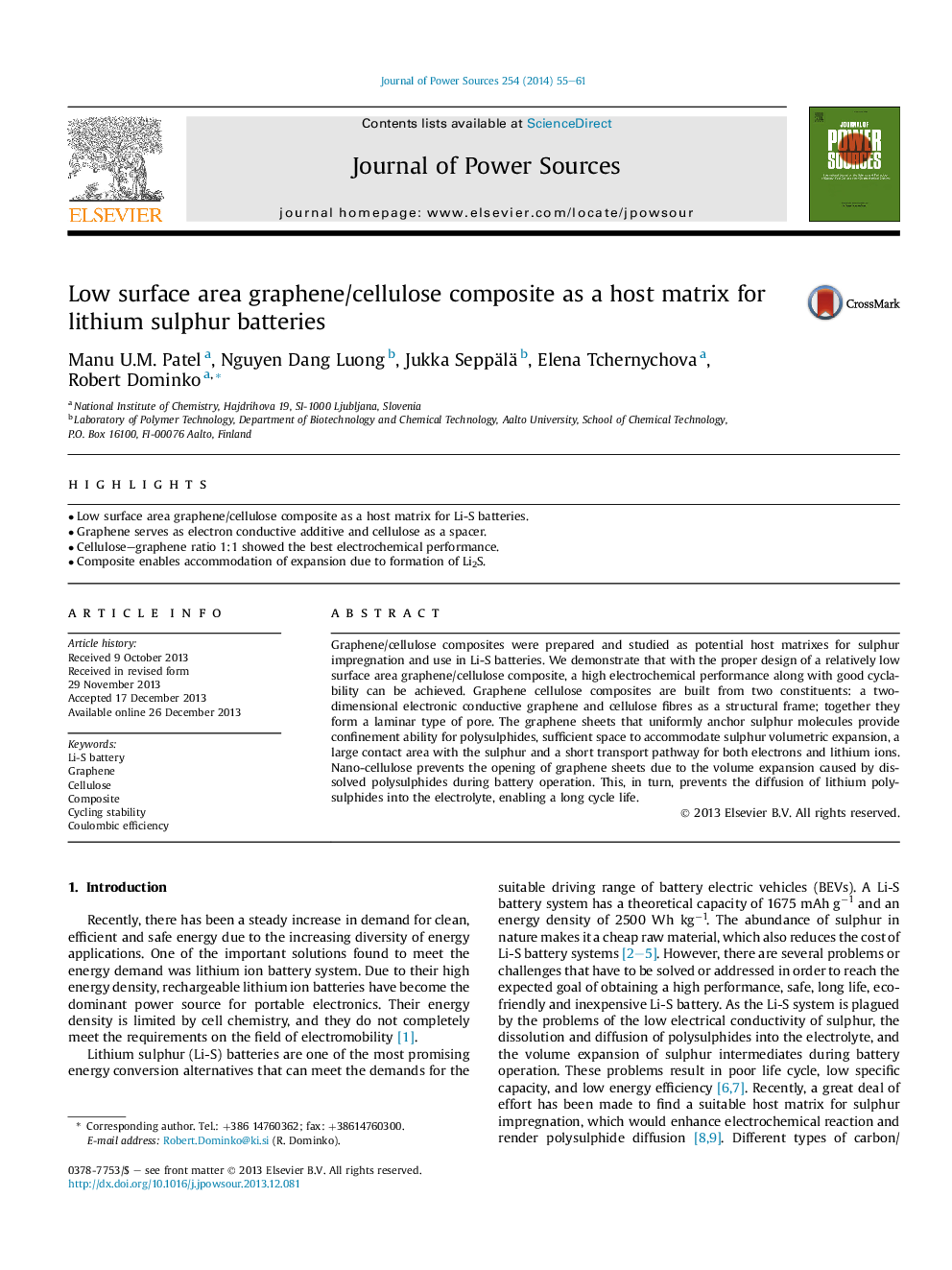| Article ID | Journal | Published Year | Pages | File Type |
|---|---|---|---|---|
| 7737532 | Journal of Power Sources | 2014 | 7 Pages |
Abstract
Graphene/cellulose composites were prepared and studied as potential host matrixes for sulphur impregnation and use in Li-S batteries. We demonstrate that with the proper design of a relatively low surface area graphene/cellulose composite, a high electrochemical performance along with good cyclability can be achieved. Graphene cellulose composites are built from two constituents: a two-dimensional electronic conductive graphene and cellulose fibres as a structural frame; together they form a laminar type of pore. The graphene sheets that uniformly anchor sulphur molecules provide confinement ability for polysulphides, sufficient space to accommodate sulphur volumetric expansion, a large contact area with the sulphur and a short transport pathway for both electrons and lithium ions. Nano-cellulose prevents the opening of graphene sheets due to the volume expansion caused by dissolved polysulphides during battery operation. This, in turn, prevents the diffusion of lithium polysulphides into the electrolyte, enabling a long cycle life.
Related Topics
Physical Sciences and Engineering
Chemistry
Electrochemistry
Authors
Manu U.M. Patel, Nguyen Dang Luong, Jukka Seppälä, Elena Tchernychova, Robert Dominko,
